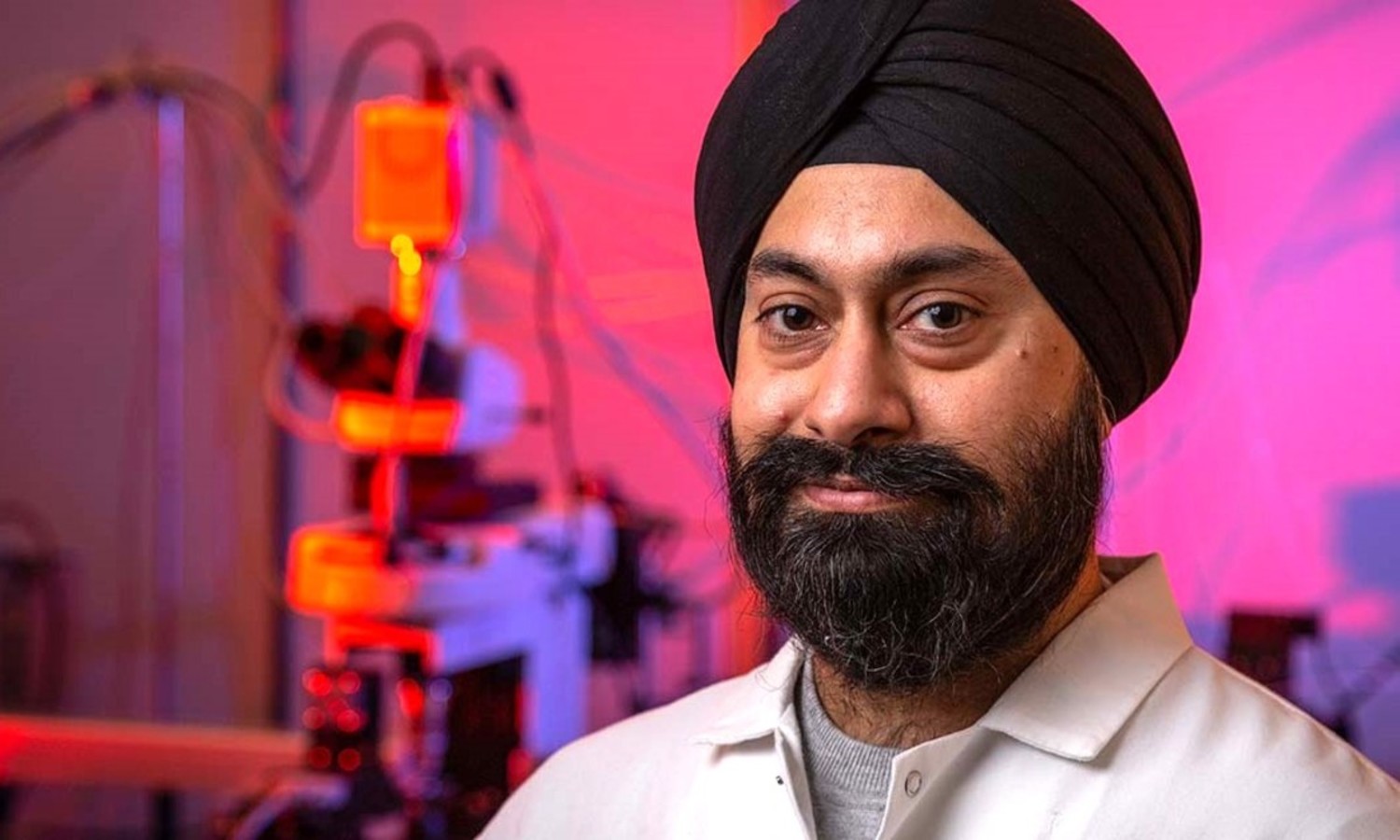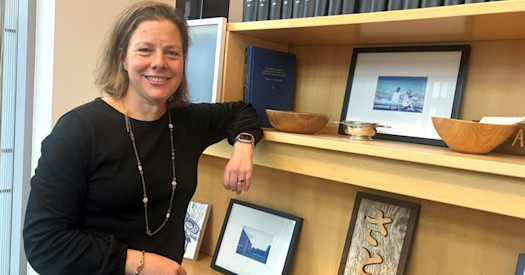 Dr. Taran Gujral: 'We tried to argue that because it is a rare cancer there are very few models. It’s not like lung cancer where you have dozens of models available.' (Photo by Robert Hood/Fred Hutch News Service)
Dr. Taran Gujral: 'We tried to argue that because it is a rare cancer there are very few models. It’s not like lung cancer where you have dozens of models available.' (Photo by Robert Hood/Fred Hutch News Service)
Fibrolamellar carcinoma (FLC) is a liver cancer that typically affects teenagers and adults under age 40 with healthy livers undamaged by alcohol or viruses. It is thought to occur in about one in five million people in the United States.
Interestingly, Dr. Taran Gujral, an associate professor in the Human Biology Division at the Fred Hutchinson Cancer Center, had never heard of FLC when he arrived at the Hutch seven years ago. Today, because of three factors, this rare cancer consumes a substantial amount of Gujral’s time:
-
Grants from the Brotman Baty Institute and the National Institutes of Health
-
A “dream team” composed of two other scientists from the University of Washington who are also BBI members
-
Gujral’s uncompromising commitment to analyzing cancer cell behavior in complex tissues and developing ways to screen potential cancer drugs for challenging cancers.
“Through this remarkable journey with FLC and other rare cancers, I have worked with individuals from diverse scientific backgrounds,” Gujral said. “This cross-fertilization with others makes an important difference in solving complex issues associated with treating cancer. One should never have preconceived notions in cancer research. When addressing the problem from various facets, we find new and often develop better solutions.”
'We went through the hoops and we understand the challenges of studying rare cancers.'
A unique solution for FLC is something Gujral is hoping – and maybe expecting – will arise from his collaboration with UW’s Dr. Raymond Yeung, a clinician-scientist specializing in liver cancer, and Dr. John Scott, a renowned expert on protein kinase biochemistry. Gujral and Yeung have been working together on FLC for several years.
“We went through the hoops and we understand the challenges of studying rare cancers,” Gujral said. “I believe we can devise successful strategies to understand FLC.”
Those “hoops” included several applications for an NIH R01 grant, seeking funds to better understand the evolution of FLC and, specifically, how and why chromosomes break apart and get put back together in the wrong way, causing cells to not function as they should.
In 2020, Gujral and Yeung submitted a proposal to NIH with only one cell line derived from a patient and were told that for an R01 grant, they needed to develop more models.
“We tried to argue that because it is a rare cancer there are very few models,” Gujral said. “It’s not like lung cancer where you have dozens of models available.”
They subsequently developed additional models and resubmitted the R01 proposal with four models, but were turned down again.
“We were told we did not have enough data on these additional models,” Gujral said. “That’s where a grant of $100,000 from BBI helped us. We generated additional data that tipped the scales in our favor and demonstrated the efficacy of the PLK1 kinase inhibitor, not just with one model, but in multiple animal models.”
NIH agreed and last March awarded a $2.5 million, five-year R01 grant to the three scientists. The funds support the evaluation of PLK1 inhibitors already under development for other cancers in human models of FLC, as well as in cancer cells in “slice cultures” of actual FLC tumors.
“By studying tumors from FLC patients and creating new models, we can pinpoint specific FLC tumor cells that are highly responsive to PLK inhibitors,” Gujral said. “The PLK inhibitors kills these cells. So, our first issues to address are, ‘Why PLK?’ and ‘What does the fusion do that makes the cells dependent on PLK1?’ We want to understand from a biological perspective why are they sensitive to PLK1 inhibitors. If we understand this, it also gives us ways to select patient-population and look at pre-empting drug resistance.”
Gujral is hopeful this work – and other research on rare cancers – will lead to clinical applications.
“Creating new models for rare cancers has been a challenging journey,” he said. “The limited resources available present both obstacles and opportunities to pioneer advancements in rare cancer research, potentially leading to novel clinical approaches that can save lives.”

